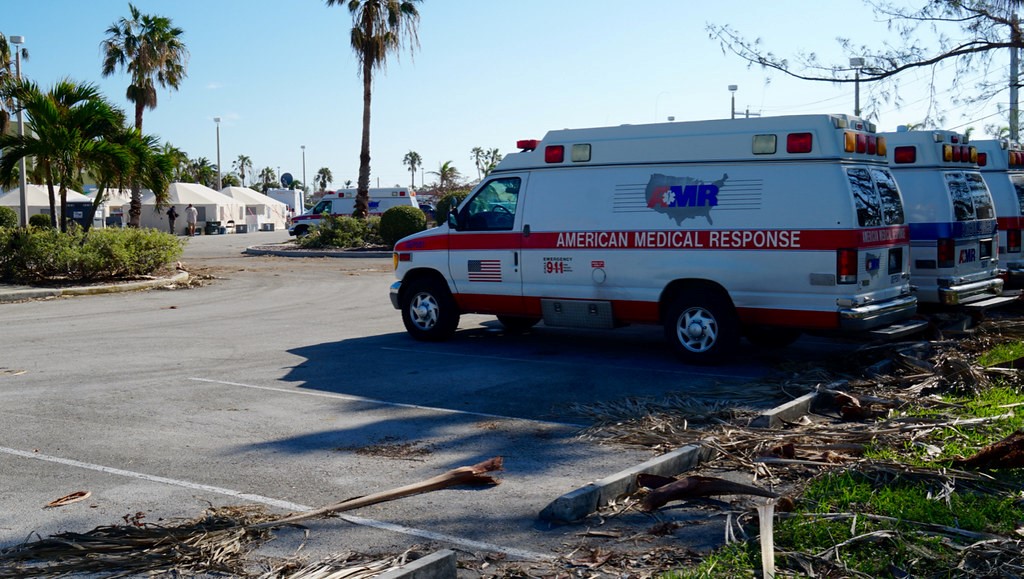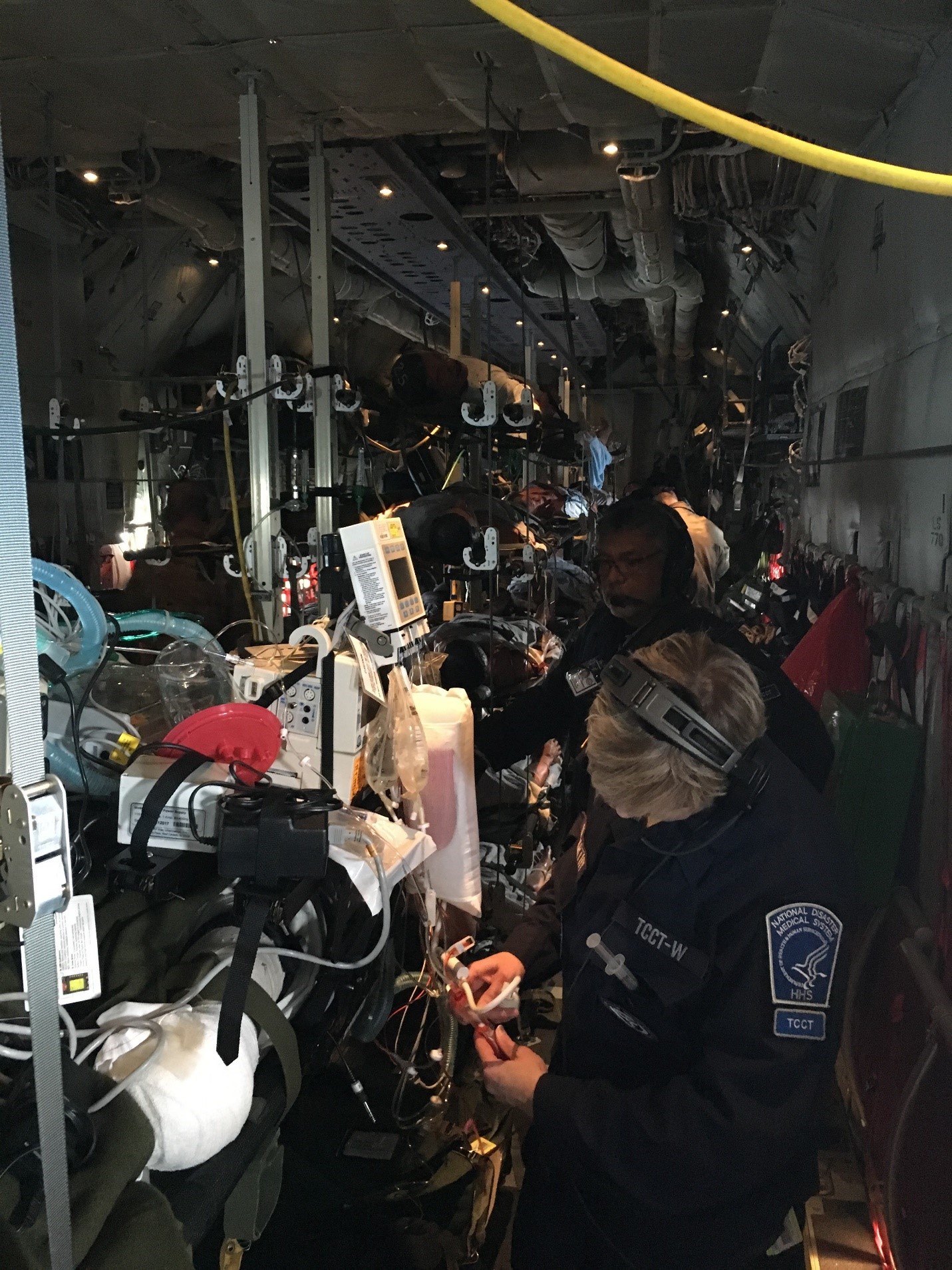NDMS Patient Movement Program
During a federally declared disaster or public health emergency, the number of patients that need to be evacuated or cared for may exceed state and local resources. When that happens, states can request federal assistance.
In response, the National Disaster Medical System (NDMS), within the U.S. Department of Health and Human Services (HHS), provides medical teams and equipment to support the initial emergency response, transportation, and definitive care for patients who are at-risk or have become seriously ill or injured as the result of the disaster or emergency.
Federal patient movement is a coordinated partnership between HHS, Department of Homeland Security (DHS), the Department of Veterans Affairs (VA), and the Department of Defense (DoD).
Emergency Medical Response
During the initial response to an emergency,
NDMS medical teams along with caches of equipment and supplies are deployed to a disaster area. NDMS teams are ready to respond within hours of being activated, providing expert care and services in conditions that are often austere and challenging.
Patient Movement and Evacuation
NDMS provides support for patient movement and evacuation from areas impacted by the disaster to designated reception facilities within the NDMS health care facility network. Patient movement is coordinated by 64 Federal Coordinating Centers (FCCs) across the country that are managed by DoD and VA. NDMS responders from Disaster Medical Assistance Teams (DMAT) and Trauma Critical Care Teams (TCCT) provide pre-hospital care and support patient transport in disaster zones during patient evacuation.

Joint Patient Assessment Tracking System
To ensure all NDMS patients are accounted for during patient movement and while receiving patient care, NDMS uses the Joint Patient Assessment Tracking System (JPATS) teams to track all federal patient movement during a disaster, including those who are being moved or evacuated, are admitted to a federally-supported shelter, or are receiving NDMS definitive care at local facilities. JPATS teams are able to support patient movement operations at aerial ports of embarkation, and local medical facilities.
Aeromedical Evacuation
HHS Critical Care Air Transport Teams, which are comprised of responders from NDMS/DMAT, NDMS/TCCT and the U.S. Public Health Service (USPHS) Commissioned Corps, provide medical care during aeromedical evacuation. These teams will be called into action during patient movement operations. The HHS aeromedical evacuation capability enables NDMS to provide critical inflight care to patients as they move between medical treatment facilities.
To ensure NDMS personnel are ready to respond, hundreds of NDMS and USPHS responders have been trained to perform aeromedical evacuation. ASPR’s NDMS Patient Movement Branch has partnered with DOD – specifically the U.S. Air Force and its Air Mobility Command at Scott AFB in Illinois and its School of Aerospace Medicine at Wright Patterson Air Force Base in Ohio – and the University of Cincinnati Medical Center and the Florida International University to develop the training needed for this new capability.

Definitive Care
NDMS provides definitive care, which means it cares for eligible patients with essential medical care until their illness or injury has been resolved. Under the definitive care program, NDMS provides care for American citizens who require additional or complex care that is unavailable because of a disaster or emergency.
The definitive care program is comprised of a nationwide network of civilian partner facilities, who have entered into agreements with the federal government to accept federal NDMS patients during a national level disaster and/or public health emergency.
NDMS works with its partners in DHS, VA, and DoD, who support transport and control of patient flow through pre-identified FCCs across the country. Definitive care is a three pronged approach which serves as an umbrella for the national disaster claims processing system, national disaster case management program, and the NDMS health care partner facilities program.

